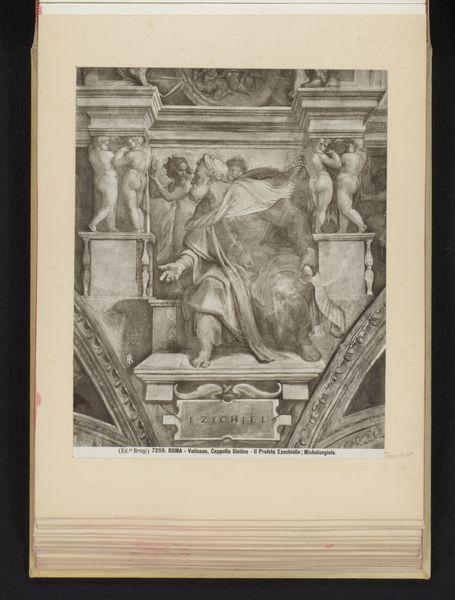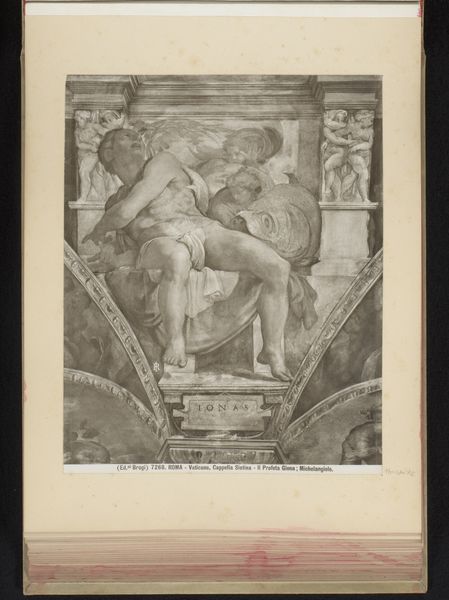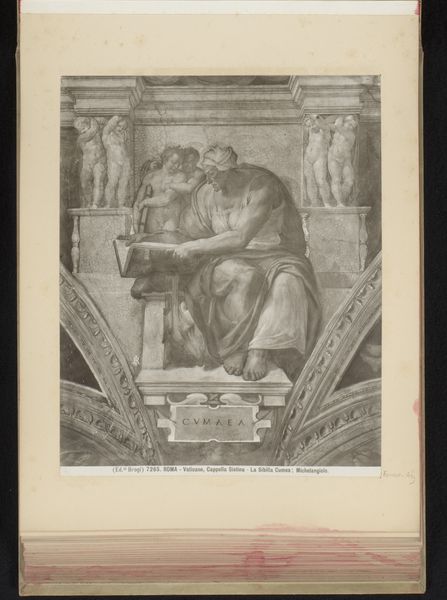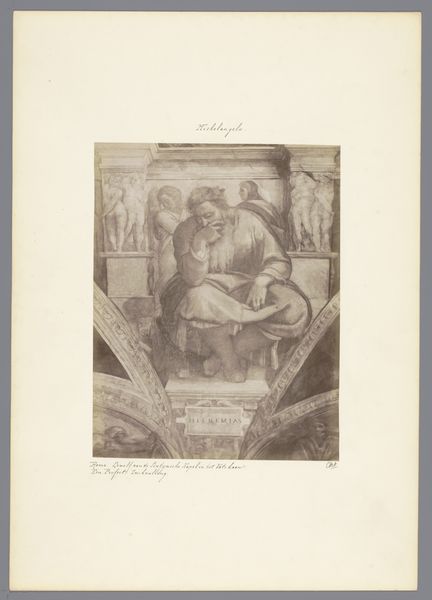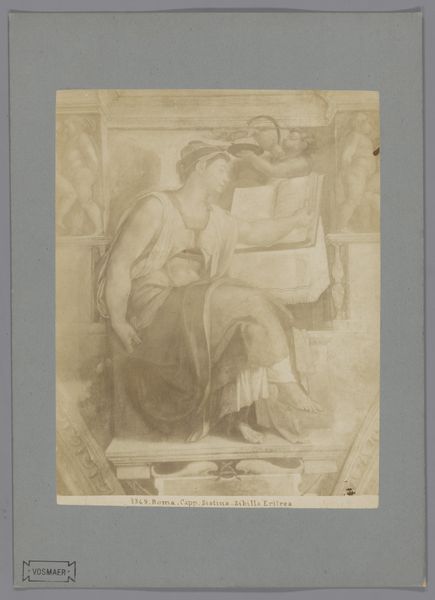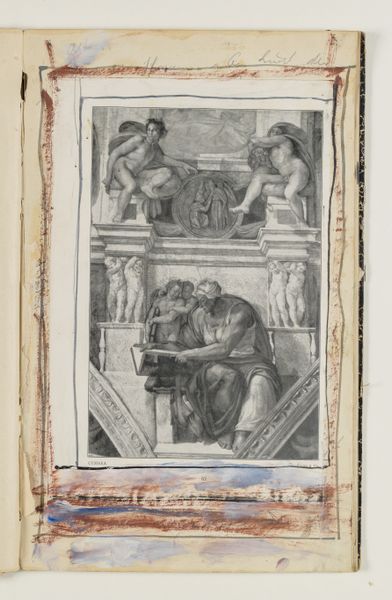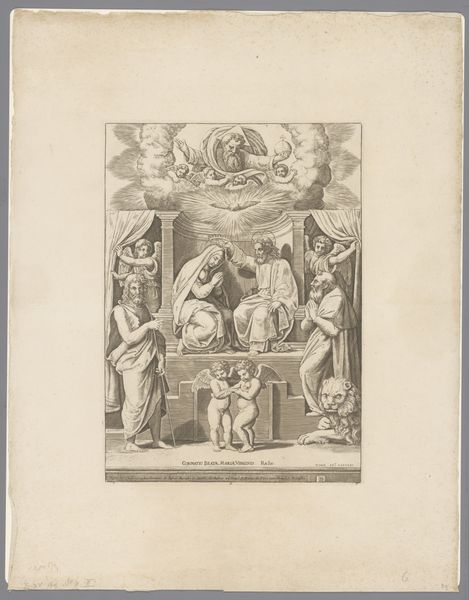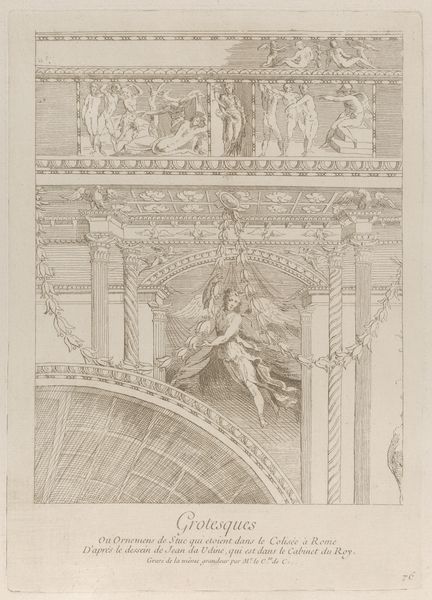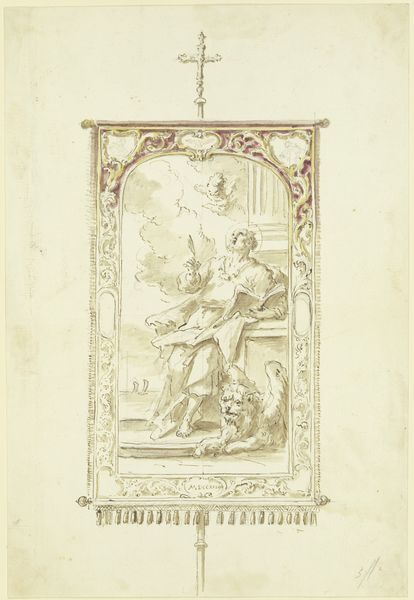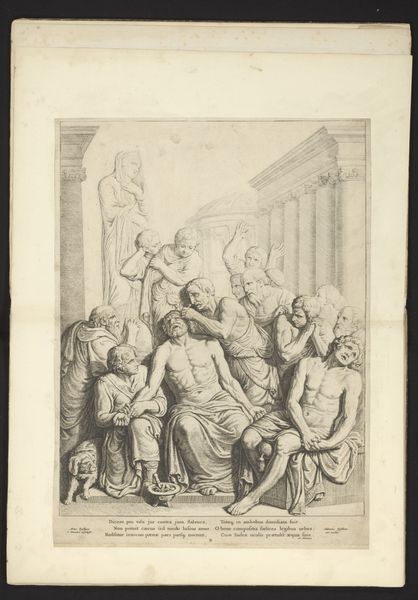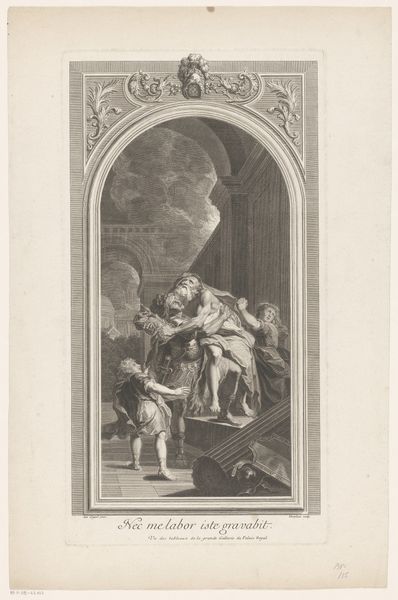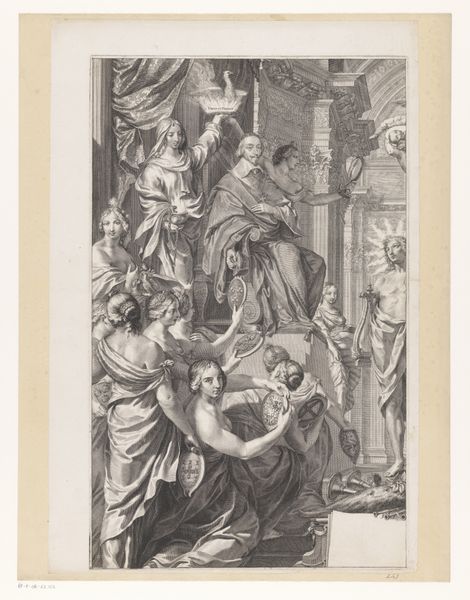
Fresco in de Sixtijnse Kapel te Vaticaanstad, voorstellende het Orakel van Delphi before 1907
0:00
0:00
drawing, paper, fresco, charcoal
#
drawing
#
charcoal drawing
#
paper
#
fresco
#
11_renaissance
#
pencil drawing
#
pencil work
#
charcoal
#
history-painting
#
italian-renaissance
Dimensions: height 248 mm, width 197 mm
Copyright: Rijks Museum: Open Domain
Curator: The Sibyl of Delphi! What strikes you about this rendition of Michelangelo’s fresco? Editor: The overall subdued tonality really brings out the weightiness of the subject matter. It’s all done with pencil and charcoal on paper, isn’t it? The softness juxtaposed with the monumentality creates an interesting tension. Curator: Absolutely. The work you see here is an early 20th-century study produced before 1907 by Edizione Brogi. What’s fascinating to me is how this drawing mediates our access to the original fresco in the Sistine Chapel. It’s history filtered through a lens of reproductive technologies and shifting aesthetic priorities. Editor: And, of course, Brogi's piece re-materializes the Sibyl into something that’s not fresco on a gigantic, holy ceiling. Its very making and reproduction via charcoal, paper, and printing technologies change how people would interact with Michelangelo's art. No longer exclusive, or purely divine, or imposing – the Sibyl has become available, affordable. Curator: Yes, and we must think about the context in which Brogi produced it. At this point, photography was beginning to disseminate images widely. I imagine prints and drawings such as this also served as mementos and ways of recalling grand tours. How interesting that the means of art production impacts the modes of remembrance. Editor: Indeed! We also must consider the labor. There’s an inherent flattening of hierarchies here. Someone other than Michelangelo, someone perhaps uncredited, invested hours in charcoal rendering – a skill. The marketplace would transform his craft into decor. Curator: Precisely. Brogi’s studio made Michelangelo accessible while, perhaps inadvertently, opening discussions around value and artistic labor. It complicates the idea of a singular "genius" behind a work. Editor: So, looking at this rendering as documentation, or simply decor, misses so much of what the work *is* in our material world. Curator: It really is a reminder that artistic interpretation is so complex and that every layer of production and reproduction, like this one, carries significant social meaning. Editor: Brogi’s work isn't just a copy but a transformation. I’m drawn to how material change remakes our understandings of history.
Comments
No comments
Be the first to comment and join the conversation on the ultimate creative platform.
